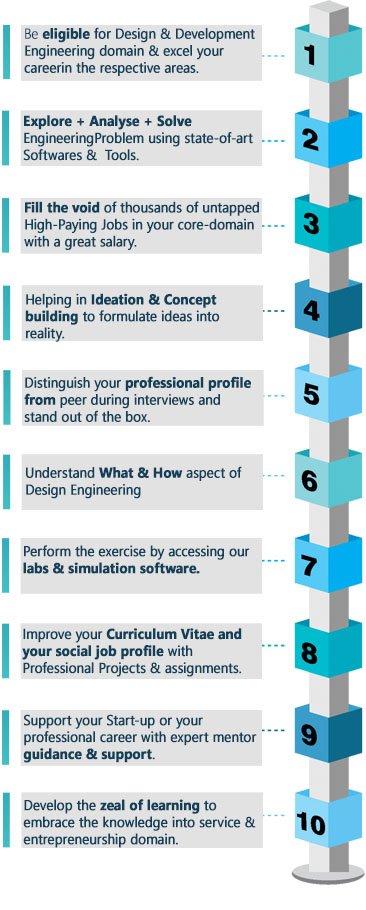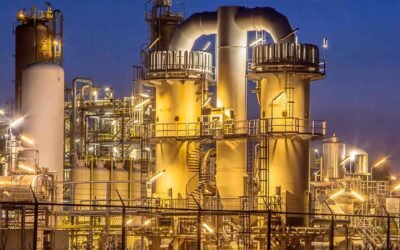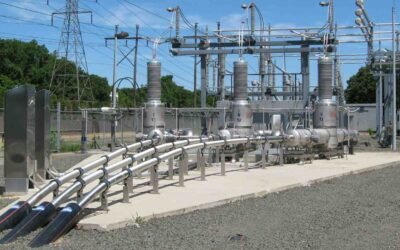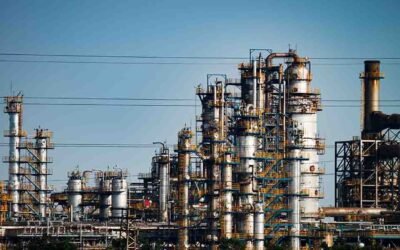About the Program
The objective of this course is to provide the candidates the Detail knowledge and skills in Piping Design discipline to facilitate faster learning curves while on the job.
This course will cover the fundamental principles and concepts used in Process Plant Layout and Piping Design Engineering. Upon completion of this course, students will have a clear understanding of the design and principles used in Piping Design System for Oil & Gas Energy Sector.
The goal of this course is to provide delegates the Detail knowledge and skills into Design, Engineering, Construction, Commissioning operation & Maintenance in the field of Piping Engineering for Oil & Energy Sector.
Learning objective
- Overview of Oil & Gas Industry, Process plants, Production Facilities, etc.
- Role of a Piping Engineer in various fields of industry.
- Concept of EPC (Engineering Procurement Construction) Projects
- Piping design and engineering principles
- Terminology, symbols, and abbreviations used in piping design
- Components of piping systems – fittings, flanges and valves, Pipe Supports
- Piping specifications and piping codes
- Piping materials
- Plant layout fundamentals and workflow procedures
- Terminology and symbols used in plant layout
- Instrument symbols and abbreviations
- Process flow diagrams (PFDs)
- Piping and instrumentation diagrams (P&IDs)
- Equipment used in process plants
- Plot Plan, Equipment Layout, Piping Layout, GA Drawing, etc.
- Guidelines for the preparation of as-built drawings.
- Preparation of Nozzle orientation.
- Guidelines for the preparation of as-built drawings.
- Plant Layouts: 3D Modeling
- Piping isometrics and bill of materials
Program Highlights

About The Course

Course Modules
- Process Plant Industry
- Overview & Basic Concepts
- Meaning of Process Plant Industry
- Typical Process Plant & Power Plant Industry objectives
- Typical Process Plant & Power Plant Industry activities
- Industry Streams
- Typical Organization chart
- Company Structure
- Production Facilities
- Typical Production Facilities.
- Artificial Systems.
- Treatment and Processing
- Product and Processing
- Typical value chain
- Value Products
- Engineering, Procurement and Construction
- EPC Overview
- Risk allocation on EPC Contact
- Choosing EPC control compared to other forms of contact
- Bankability of EPC contract.
- Various entities and other project documents
- Different mode of contract
- Contract Jargon: Lump sum, turnkey, EPCM, EPCC, Cost-plus, reimbursable.
- Fundamentals of Pipe and Pipe Fittings: Standards, Selection, Application, Drawing Symbols & Dimensioning
- Definition and application of pipe
- Pipe designators-IPS, NPS, NB/DN
- Pipe wall thickness- schedule number, pipe weight.
- Pipe- lengths, ends, joining method, manufacturing methods.
- Pipe symbol
– Pipe Fitting
– Elbow
– Tees
– Reducer
– Coupling
– End caps
– Fitting dimensions and tables
- Piping system components: standard, selection, application, drawing symbol & dimensioning
- Flange, Gaskets, and Bolting:-
– Introduction
– Valve Function and applications
– Valve Types
– Valve stem packing
– Valve selection procedure
– Valve inspection and testing - Pipe hangers and supports:-
– Classification of supports
– Anchors, pipe guides, limit stops
– Pipe shoe dummy leg/trunion
– Field support/base support
– Rigid hanger rod & clevis, Trapeze.
– Flexible hanger variable & .constant.
– Pipe rack design type, height and width calculations - Pipe manufacturing processes and Material Selection:-
– Introduction
– Pipe manufacturing processes
– Application standard for pipe and piping - System Component
– Material Selection& Considerations
– Piping Specification
– Piping System Design (Codes & standards)
- Flange, Gaskets, and Bolting:-
- Piping System Design (Codes & standards)
- Overview of piping codes & standards
– Process plant piping and ASME B31.3
– Liquid transportation piping and ASME B31.4
– Gas transmission piping and ASME B31.8
– General comparison of ASME B31.3, B31.4 and B31.8 - Piping material and material specifications– Material properties
– Classification of materials
– Material specification (ASTM)
– Common piping materials - Pressure Design of Pipe and Piping System component
– Introduction
- Overview of piping codes & standards
- – Straight pipe
– Curved Selection
– Branch Connection
– Pressure Rating of Piping fittings - Pipe Hydraulic & Line sizing
– Flow rate, velocity, pipe sizing calculations
– Reynolds number laminar/turbulent flow
– Darcy Weisbach & Hazen William Equations
– Pressure drop calculations, NPSH calculations - Piping System Studies
– Drum piping, pump piping, compressor piping, heat exchanger piping, column piping, tank farm piping, underground piping, pipe rack.piping. Process Plant layout: Piping Design & Drafting - Process Plant layout: Piping Design & Drafting (Drawing and Documentation)
- Flow Diagrams
– Block flow diagrams (BFD)
– Process Flow Diagram (PFD)
– Utility flow Diagram (UFD)
– Piping & Instrumentation Diagram (P & ID.)
– Line Numbering
– Line Number Requirements
– Instrument types & symbols
– Flow, Temperature, Pressure & level - Plant layouts: Piping Layouts
– Equipment lists
– Piping line lists
– Piping Plan Development
– Preparing Piping Layout Drawings by placing instruments, valves etc.- Rack Piping
– Pipe rack spacing, drawing pipe in the rack etc. - Equipment Layouts
– Equipment data sheets
– Equipment foundations and supports
– Equipment sketches
– Equipment drawings
– Equipment nozzle specifications
– Equipment foundation drawing - Piping Isometrics
– Definition
– Piping Isometric Drawing
– Isometric Dimensions, Notes& Callouts
– Isometric offsets, Print Reading Exercises
– Exercises on the creation of isometric form
– Piping plan & Sections - Piping Spools
– Definition
– Types of spool Drawings
– Guidelines to Prepare Spool Drawings
– Print Reading Exercises
– Exercises on creation of piping spool from piping isometric
– MTO (Material Take off): Types and applications
- Flow Diagrams
- Plant Layout: 3D Modeling:- Plant Design Management System (PDMS)
- Equipment Modeling
– Creating equipment by using primitives.
– Creating Equipment by using PDMS standards catalog.
– Creating Obstructions
– Manipulation of primitives & equipment
– Nozzle placement and manipulations
– Understanding parameters & attributes
– DB Utility - Pipe Design
– Pipe & Branch creations
– Pipe routing & slope piping
– Manipulating Pipe components & assemblies
– Checking Data consistency
– Checking & rectifying classes
– Locating Support & Deciding Support span
– Generating text report like line & support lists - Draft
– Preparing Layout by using Draft Modules
– Creation Views
– A motions & Dimensioning - ISO Draft
– Extracting isometrics
– Preparing isometrics for fabrication & erection.
- Equipment Modeling
Course Certificates
SmartBrains is associated with The National Skill Development Corporation (NSDC) as the Training and Certification partner for various job oriented training programs across various sectors including Oil & Gas, Power, Renewable Energy, Hydrocarbon, IT & ITs, Electronics, Telecom, Agriculture, Life science etc. offering assessment based Training & certifications for a gamut of job profile.
Who should join?
- Working professionals in Domains: Site Engineering, Construction & Commissioning operation & Maintenance, Technicians in Mechanical Engineering Field.
- Students (Mechanical Engineering, Diploma in Mechanical Engineering) who want to develop their career in Design Engineering.

For Corporate queries
A-25, Sector-59, Noida (UP),India
Pin Code-201301
Connect with Program Advisor
training@smartbrains.com
+91 9891108002 | +91 9891108700
www.smartbrains.com
Nodal Centers
Noida, Dehradun
Guwahati, Pune
Course Features
- Lecture 0
- Quiz 0
- Duration 70 hours
- Skill level All levels
- Language English
- Students 0
- Assessments Yes






